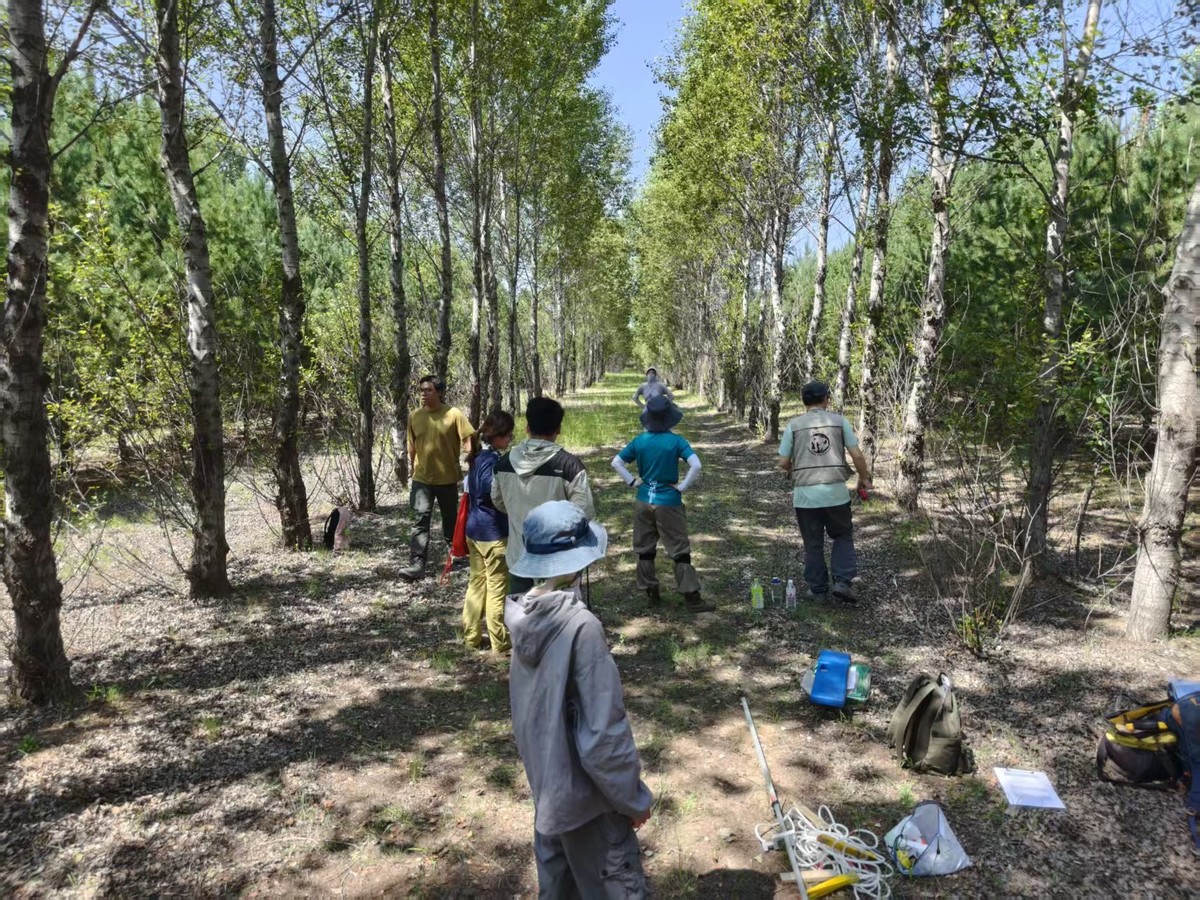7月,是百万植树计划每年进行生态调查的日子。而今年的夏天除了生态调查以外,还有林地调查, 6位志愿者和我们一起在7月10号至17号对老林地进行了走访。上一次林地调查放在7月还是2019年,那时候我们针对项目的老林地进行林地阶段性调查,从结果来说,那次调查非常成功。百万植树计划证明了老林地的稳定性,相应可以适当减少工作人员的调查频次和强度。
July marked the time for the Million Tree Project’s annual ecological survey, but this summer, we also conducted a forest survey. From July 10th to 17th, six volunteers joined us to revisit the forests that were planted in early years. The last forest survey conducted in July was in 2019, when we carried out a comprehensive survey of the earliest forest sites. The results from that survey confirmed the stability of the grown forests. This allowed the Million Tree Project to relatively reduce the frequency and intensity of forest surveys on these forest sites accordingly.

图1 志愿者和工作人员在作准备
Figure 1 Volunteers and staff are preparing for the survey
而今年的林地调查分为三个部分:生长调查、土壤调查、树芯调查。
This year's forest survey had three main components: growth survey, soil survey, and tree core survey.
生长调查是百万植树计划的常规内容,百万植树计划的主要数据来源就是每年度的生长调查。一般包括树高、胸径地径、行株距等。收集这些数据可以让我们清楚了解到百万植树计划的林地生长状态,存在的问题,以及后续管理和合作可以改进的地方。
Growth Survey: This routine and core survey is the primary source of data for the Million Tree Project. It typically includes measurements such as tree height, diameter at breast height (DBH), basal diameter, and row/tree spacing. These metrics provide valuable insights into the forest’s growth, existing challenges, and help guide future management and collaborative improvements.

图2 测量与记录
Figure 2 Measuring and recording data
土壤调查是百万植树计划偶尔进行的项目。往年试过挖一立方米土方进行土层剖面调查,也会在老林地中采集土样进行成分分析,了解造林治沙后对土壤的作用和有机成分的变化。今年的土壤调查主要是调查林地表层的腐殖质积累和变化。具体包括基础的土壤类型,地表腐殖质的采集和称重,留样分析腐殖质分解速度等。
Soil Survey: This is an intermittent project. In previous surveys, we excavated one cubic meter of soil for layer profiling or collected samples for compositional analysis to assess the impact of afforestation on soil organic matter. This year, the focus shifted to examining the accumulation and changes in surface humus. The survey involved soil type classification, humus collection and weighing, and decomposition rate analysis.

图3 感受正宗的吃土吧!
Figure 3 Literal "soil-tasting", try it!
树芯调查是今年第一次进行的调查项目。通过在树干上钻孔采取树芯,从而分析确定树木生长速率、树木年龄、树木生长坚实程度、树木生长环境污染情况以及营养物质运移等相关情况。这里特别感谢MAX这位好小伙,做了整个活动中最粗中有细的活。
Tree Core Survey: A new addition this year, the Tree Core Survey involves extracting cores for analyzing growth rates, age, wood density, environmental pollution, and nutrient transport. Special thanks to volunteer Max for completing this meticulous and challenging task.

图4 采出的树芯
Figure 4 Extracted tree core samples
辛苦劳动之后,志愿者受到内蒙古美食的盛情款待。以至于几乎所有志愿者都会回去后念叨那些美味。特别是内蒙古的锅茶,欢迎各位有志者将来前来品尝!
After the hard work, volunteers were treated to a hearty feast of Inner Mongolian cuisine. Almost all of them kept mentioned the delicious food in their feedback afterwards—especially the savory Mongolian milk tea (Guo Cha)! We warmly welcome more like-minded individuals to join us in the future!

图5 内蒙古的锅茶
Figure 5 Inner Mongolian milk tea